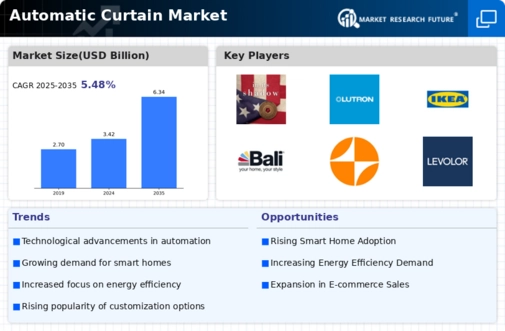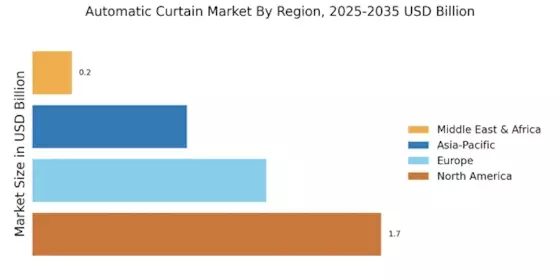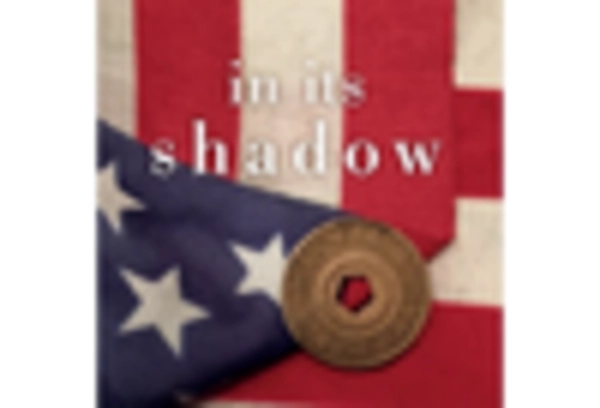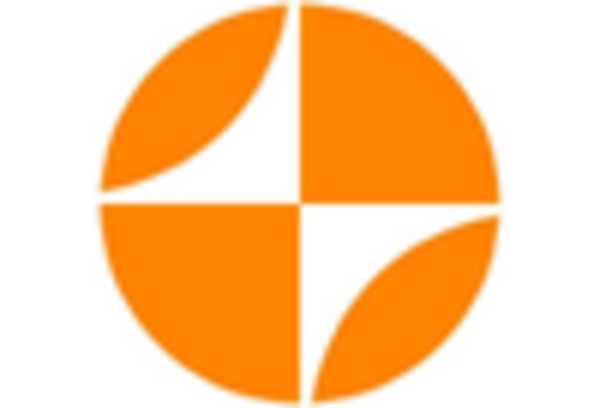Increased Focus on Home Aesthetics
The Automatic Curtain Market is also driven by an increased focus on home aesthetics. Consumers are increasingly seeking products that not only serve functional purposes but also enhance the overall design of their living spaces. Automatic curtains offer a blend of style and convenience, available in various materials, colors, and designs to suit diverse interior themes. This trend is supported by Market Research Future indicating that home decor spending is on the rise, as individuals invest in creating visually appealing environments. Consequently, the Automatic Curtain Market is likely to see growth as consumers prioritize aesthetic value alongside functionality.
Rising Demand for Energy Efficiency
Energy efficiency is becoming a critical consideration for consumers, influencing the Automatic Curtain Market. Automatic curtains can help regulate indoor temperatures by controlling sunlight exposure, thereby reducing reliance on heating and cooling systems. This energy-saving capability aligns with the growing emphasis on sustainability and eco-friendly living. Market data indicates that energy-efficient home solutions are increasingly sought after, with consumers willing to invest in products that contribute to lower energy bills. As awareness of environmental issues rises, the Automatic Curtain Market is likely to benefit from this trend, as more consumers opt for energy-efficient solutions in their homes.
Urbanization and Changing Lifestyles
Urbanization is a significant driver of the Automatic Curtain Market, as more individuals move to urban areas where space is often limited. In such environments, automatic curtains provide a practical solution for maximizing natural light while maintaining privacy. Additionally, changing lifestyles, characterized by busier schedules and a preference for convenience, are pushing consumers towards automated solutions. Market data suggests that urban dwellers are increasingly adopting smart home technologies, including automatic curtains, to simplify their daily routines. This trend indicates that the Automatic Curtain Market may continue to expand as urbanization and lifestyle changes shape consumer preferences.
Technological Advancements in Automation
The Automatic Curtain Market is experiencing a surge in demand due to rapid technological advancements. Innovations in automation technology, such as improved sensors and smart controls, are enhancing user experience and functionality. For instance, the integration of voice-activated systems and mobile applications allows users to control curtains remotely, thereby increasing convenience. According to recent data, the market for smart home devices, which includes automatic curtains, is projected to grow significantly, indicating a shift towards more automated living environments. This trend suggests that as technology continues to evolve, the Automatic Curtain Market will likely see increased adoption rates, driven by consumer preferences for modern, automated solutions.
Growing Awareness of Smart Home Technologies
The growing awareness and acceptance of smart home technologies are significantly influencing the Automatic Curtain Market. As consumers become more familiar with the benefits of smart devices, the demand for automated solutions, including curtains, is likely to increase. This trend is supported by market data showing a rise in smart home adoption rates, with many households integrating various automated systems for enhanced convenience and security. The Automatic Curtain Market stands to gain from this shift, as consumers seek to create interconnected home environments that offer both functionality and ease of use.


















Leave a Comment